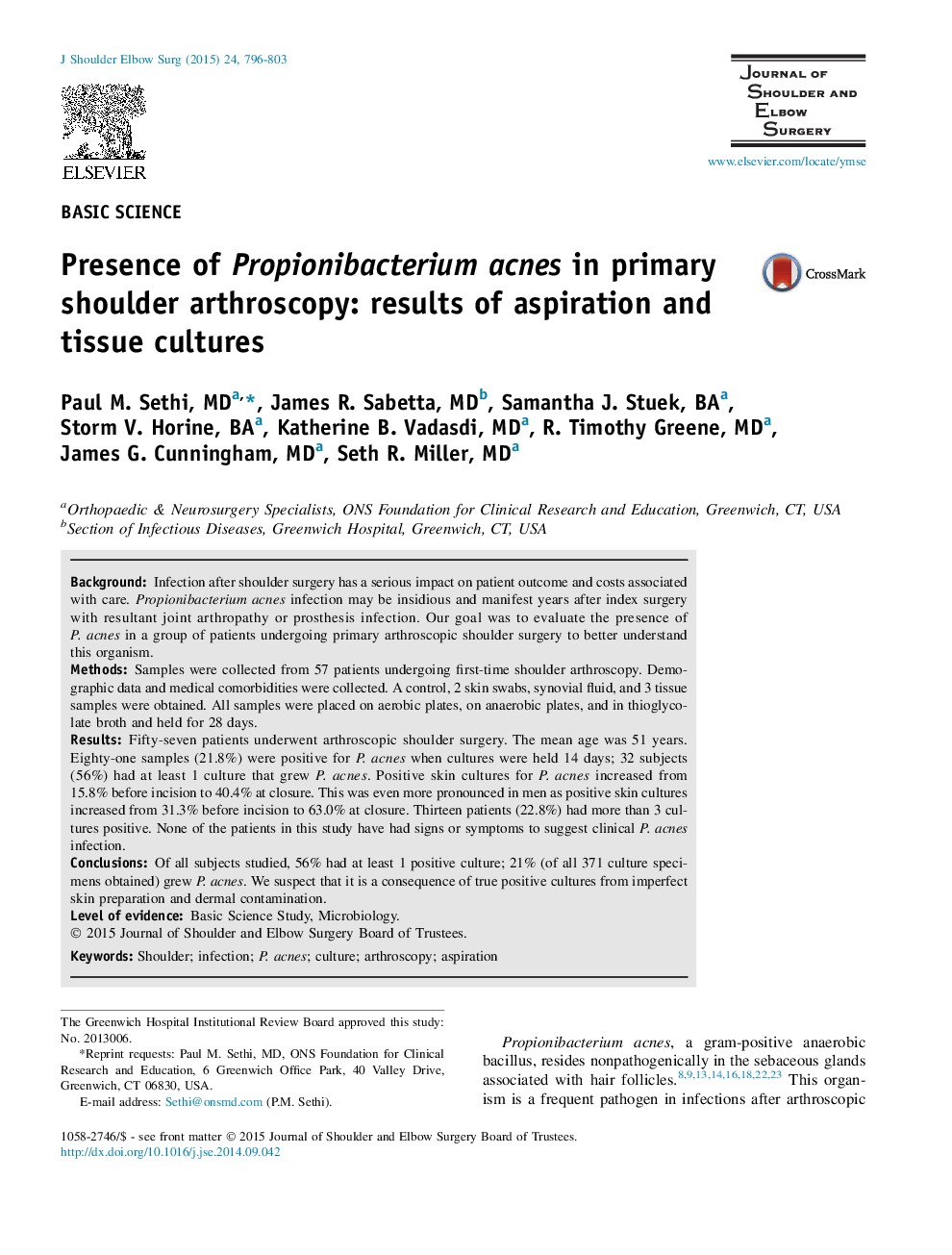| Article ID | Journal | Published Year | Pages | File Type |
|---|---|---|---|---|
| 4073066 | Journal of Shoulder and Elbow Surgery | 2015 | 8 Pages |
BackgroundInfection after shoulder surgery has a serious impact on patient outcome and costs associated with care. Propionibacterium acnes infection may be insidious and manifest years after index surgery with resultant joint arthropathy or prosthesis infection. Our goal was to evaluate the presence of P. acnes in a group of patients undergoing primary arthroscopic shoulder surgery to better understand this organism.MethodsSamples were collected from 57 patients undergoing first-time shoulder arthroscopy. Demographic data and medical comorbidities were collected. A control, 2 skin swabs, synovial fluid, and 3 tissue samples were obtained. All samples were placed on aerobic plates, on anaerobic plates, and in thioglycolate broth and held for 28 days.ResultsFifty-seven patients underwent arthroscopic shoulder surgery. The mean age was 51 years. Eighty-one samples (21.8%) were positive for P. acnes when cultures were held 14 days; 32 subjects (56%) had at least 1 culture that grew P. acnes. Positive skin cultures for P. acnes increased from 15.8% before incision to 40.4% at closure. This was even more pronounced in men as positive skin cultures increased from 31.3% before incision to 63.0% at closure. Thirteen patients (22.8%) had more than 3 cultures positive. None of the patients in this study have had signs or symptoms to suggest clinical P. acnes infection.ConclusionsOf all subjects studied, 56% had at least 1 positive culture; 21% (of all 371 culture specimens obtained) grew P. acnes. We suspect that it is a consequence of true positive cultures from imperfect skin preparation and dermal contamination.
